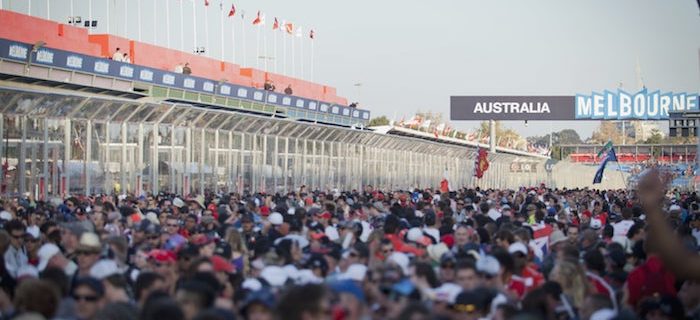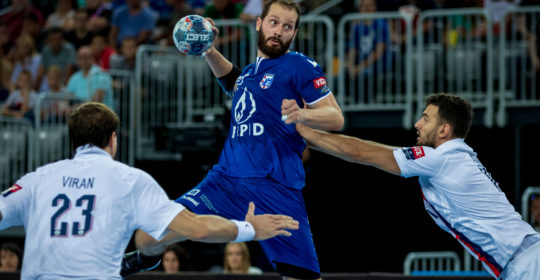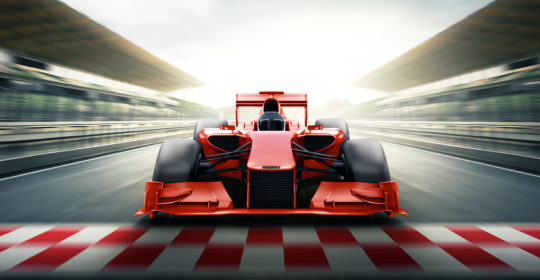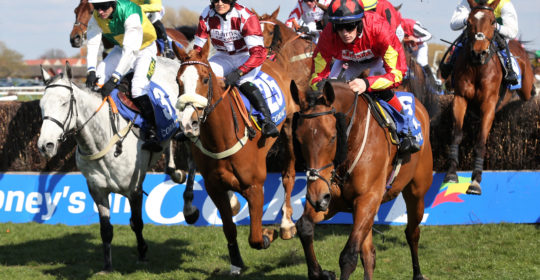The Australian Grand Prix is an annual motor race and the traditional season opener, with its contract to host a Formula One event currently running until 2023.
Typically, it takes place over a weekend in the middle of March, and it draws attendance numbers over race weekend of more than 300,000.
Typically, as with any F1 event, there are practice sessions and qualifying rounds over the race weekend, ahead of the main race on a Sunday afternoon.
Sponsored at the time of writing by luxury Swiss watchmaker Rolex with naming rights, the event is Australia’s second-oldest racing contest still being run –behind the Alpine rally, which has taken place since 1921.
The race distance is 58 laps or 307.574 km, with the track 5.303km in length. A maximum time limit of two hours excluding ‘red flag’ suspensions is set. The race length in a Grand Prix event is defined as the smallest number of complete laps exceeding 305 kilometres, the Monaco Grand Prix is the only exception.
There are 16 turns in the temporary circuit, which is constructed some six weeks ahead of the race weekend, and then taken done again four weeks afterwards.
History
The first Australian Grand Prix took place more than 90 years ago in 1928 on the state of Victoria’s Philip Island.
The race has been part of the Formula One World Championship, the premier single-seater motorsport competition, since 1985. It’s been held in numerous locations over the years of its existence. As of 2018, in all more than 20 separate venues had staged the competition.
That’s even more than for the French Grand Prix since that event first vroomed off in 1906. Indeed, the Australian Grand Prix has been held in every state Down Under:
- 1964 to1972 it was a central part of the Tasman Series
- 1957 to 1983 it was frequently a round in the Australian Drivers’ Championship
- 1985 to1995, races were held at the Adelaide Street Circuit
- Since 1996, starting flags have been waved at the Melbourne Grand Prix Circuit in the city’s Albert Park
Since the move to Melbourne, the Australian Grand Prix has been the F1 World Championship’s first race, apart from in 2006 and 2010. In Adelaide, it was the Championship’s last round. Since 2009, the final race of the season has been held in Abu Dhabi in the UAE.
How does F1 work?
Governed by the Fédération Internationale de L’Automobile (FIA), and established in 1905, F1 features some of the most technologically advanced, speediest cars in the world.
At the moment, 11 teams comprising two cars each race in 21 Grand Prix events worldwide.
Drivers win points in each race, with 25 points for a first-place, 18 for finishing second and 15 for being placed third on the podium. This continues as far as 10th place. These are accumulated and, at the end of the season, the highest scorer wins the FIA Formula One World Drivers Champion title.
As British driver Jenson Button puts it:
A lot of people think Formula One isn't a sport because everyone drives a car when they go to work in the morning. But we're pulling up to six G on a corner or during breaking, which is almost like being a fighter pilot. So we have to do a lot of work on our neck muscles.
Australian Grand Prix: did you know?
- Michael Schumacher set the record for the fastest recorded lap at the race in 2004, zipping his Ferrari around the track at 1:24.125 – and earning himself his fourth win in the process.
- Since 1985, no Australian driver has finished on the podium in their home race.
- It takes some 290,000 staff hours to put the race circuit together each year.
- British driver Lewis Hamilton has enjoyed pole position here every season since 2014 (as of 2019), but only converted one into race victory, in 2018.
- Lex Davison and Michael Schumacher are the most successful drivers in the race’s history at four wins each, McLaren and Ferrari have enjoyed a dozen victories apiece (as of 2019)
Betting on the Australian Grand Prix
Betting can only heighten the excitement of what is already a truly thrilling occasion.
Start by learning from the practice sessions – they can teach you a lot about the driver and car performance, even if they don’t count for anything in the contest. The second of these two sessions is typically the most representative.
Equally, look out for the weather forecast, since rain can also make things more unpredictable.
There are qualifying rounds ahead of the final race, run as a three-stage knockout. Here, look out for the odds for pole position – by now you should have gained some useful insights.
Formula 1 popular betting markets
- Outright betting is placed over a full season, and wagers can be made any time during the campaign
- Championship odds is a straightforward punt on which driver will win the season
- F1 constructors’ championship odds: This is on the team which finishes with the most cumulative points at the end of a full season
- Any race podium finish: Bet on any driver to win a race, and to finish on the podium in the top three places
- Race winner: As the title suggests, this is just the driver who finishes first
- Pole position: This goes to the driver finishing the third qualifying session (on the Saturday afternoon) first. It means they start the race in first place on the grid.
- Fastest lap: This bet is on who completes the quickest lap during the race.
Finally, you can also bet on whether a safety car will appear during the race, and on the top three podium finishes.
Race previews, Formula 1 stats, driver preferences, weather, grid position and lap times during practice rounds can all help you decide on your betting strategy.
Summing up
The Australian Grand Prix is an amazing event, with everything to play (or drive!) for. Place a bet via one of our reputable online bookies today.





